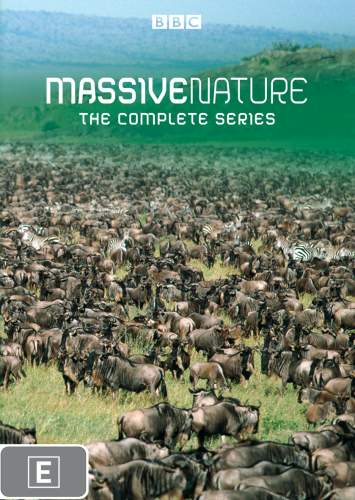
The BBC Natural History department sure knows how to crank out quality nature documentaries either with or (as in this case) without David Attenborough. This series was produced in 2004 and focuses on massive natural phenomena involving animals in incredible numbers. All of the episodes (6 in total) involve a major movement of creatures and the predators which try to get them. The dramatic and sometimes droll voiceover discusses what each of the creatures can do (if anything) to increase their chances of getting away rather than getting caught and eaten. The stories follow a number of months in the life of each of the animals and examines the build up to the moment of impact between the species both from the perspective of the prey and the predator.
As usual the cinematography is spectacular and is in this case combined with some 3D graphics to illustrate various points. Some of the footage used here was also used on the Greatest Wildlife Show on Earth DVD which I reviewed recently but there is not that much crossover. Thestories episode only focusing on one clash between predator and prey, thereby allowing time for extra detail than on many such shows.
The sixepisodes (each of approximately half an hour) are:
1. The Deep - A massive shoal of sardines make a 1000 mile journey up the coast of Africa being attacked by thousands of predators including seals, dolphins, sharks and gannets. Why do they do it and how do the predators know where to find them?
2. The Trap - Flamingos flock to a soda lake in Africa tofeed despite the poisonous water. They are attacked by baboons, eagles and other birds. Why do some survive and others not?
3. The Crossing - One million wildebeest cross the Mara River in Africa every year to get to the rich grazing lands on the other side. They need towatch out for crocodiles, leopards, lions and their own stupidity.
4. The Falls - Salmon return to the river they were born in to spawn and die, but only if the grizzly bears don't get them first.
5. The Edge - Tiny Adell penguins leave their breeding grounds in the deep south before winter closes in but leopard seals and hunting birds are waiting for them. Which of the young will survive and why?
6. The Exodus - Millions of bats all leave a cave together in Florida but they need to get past the snakes, birds of prey, raccoons and flesh eating bugs first. Not anepisode to watch over dinner.
are told in a dramatic and detailed way with each half hour
As usual the cinematography is spectacular and is in this case combined with some 3D graphics to illustrate various points. Some of the footage used here was also used on the Greatest Wildlife Show on Earth DVD which I reviewed recently but there is not that much crossover. The
The six
1. The Deep - A massive shoal of sardines make a 1000 mile journey up the coast of Africa being attacked by thousands of predators including seals, dolphins, sharks and gannets. Why do they do it and how do the predators know where to find them?
2. The Trap - Flamingos flock to a soda lake in Africa to
3. The Crossing - One million wildebeest cross the Mara River in Africa every year to get to the rich grazing lands on the other side. They need to
4. The Falls - Salmon return to the river they were born in to spawn and die, but only if the grizzly bears don't get them first.
5. The Edge - Tiny Adell penguins leave their breeding grounds in the deep south before winter closes in but leopard seals and hunting birds are waiting for them. Which of the young will survive and why?
6. The Exodus - Millions of bats all leave a cave together in Florida but they need to get past the snakes, birds of prey, raccoons and flesh eating bugs first. Not an
are told in a dramatic and detailed way with each half hour

DOWNLOAD:
Fast Download Links
Password : thedirectdownloadblogspot





No comments:
Post a Comment